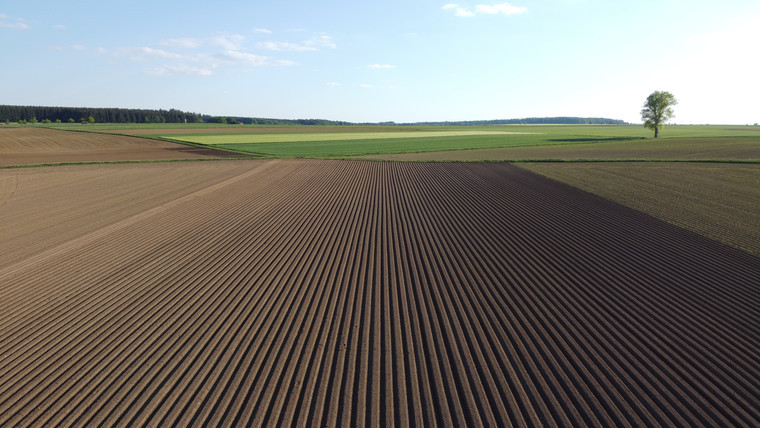While farming and countryside organisations generally welcomed the release of further details on the Sustainable Farming Incentive (SFI) – the entry level strand of the Environmental Land Management scheme (ELMS) – there were significant concerns around the detail.
Environment Secretary George Eustice provided a significant update on the SFI, including the long-awaited payment levels, and stressed that the new policy would be “optional, but open to all”.
Referring to the “modular” nature of the SFI, he went on: “Farmers will be free to choose which elements work for them. In some landscapes and in some sectors, some businesses may decide to embrace it extensively. For others, the scheme may be a smaller part of their business model, but they may make space for nature on less productive parts of their holding.
“It is not the role of the government to tell farmers what to do, but rather to offer market-based payments to willing participants in order to incentivise the uptake of schemes on the scale required to deliver the policy outcomes that the government has set itself.”
Emphasising the role of domestic food production in food security, Mr Eustice made the point that areas of food production that enjoyed the highest levels of self-sufficiency – including poultry, eggs, carrots and swedes – tended not to be areas that had traditionally been subsidised.
He commented: “For most of these successful sectors, Direct Payments are a largely inconsequential part of their business model.”
Mr Eustice also highlighted how emerging techniques such as regenerative agriculture could reduce costs and improve profit margins while helping the environment.
Stressing that government policy would “support and incentivise” such techniques, he went on: “Those who embrace these sorts of sustainable practices will not only see the agronomic advantages inherent in them and the reduction in their costs, but they will also qualify for payments and incentives for the benefits their approach delivers for nature and the contribution this makes towards the Government’s policy objectives.”
The long-awaited detail revealed three initial standards to which farmers will be able to sign up. They are:
- Arable and horticultural soils – offering between £22 and £40 per hectare and including activities such as testing of soil organic matter
- Improved grassland soils – offering between £28 and £58 per hectare for activity, including producing a soil management plan or herbal leys on at least 15% of land
- Moorland and rough grazing – offering £148 fixed per agreement per year plus an additional variable payment rate of £6.45 per hectare.
As to the thinking behind the scheme, Mr Eustice said the Government’s policy outcomes were to:
- Halt the decline in species abundance by 2030
- Reduce greenhouse gas emissions
- Plant up to 10,000 hectares of trees per year in England
- Improve water quality
- Create more space for nature in the farmed landscape
- Ensure a vibrant and profitable food and farming industry which supports the Government’s levelling-up agenda and helps safeguard food security.
Mark Tufnell, President of the Country Land and Business Association, said the announcement marked “a major milestone in the development of England’s new agriculture policy”, adding: “The Environmental Land Management schemes have the potential to be the most progressive and environmentally responsible schemes of their kind anywhere in the world.”
The response from the NFU was less enthusiastic, and while President Minette Batters welcomed the additional information and the commitment to food security and self-sufficiency, she stressed that farmers needed “a detailed scheme that works on farm, that is economically viable and really does give [farmers] a fair return for those goods that are provided”. In a video message to members, she said she still didn’t see “enough of that”.
NFU Vice President Tom Bradshaw said: “While it is good to finally have some more clarity on the scheme offering, ultimately more detail is needed for farm businesses to make informed decisions.”
He went on: “It’s clear that DEFRA has taken on farmers’ feedback on the pilot scheme, and we can see that meaningful changes have been made to the final offer, including much-needed flexibility for tenant farmers to participate and the introduction of a more flexible approach to inspections.
“However, it is vital that the SFI recognises the significant costs farmers could incur in delivering public goods and fully recognises that in the payment rates, at a time when direct payments are phased out. We have concerns in this area, and it is vital that these are addressed in order to attract the participation DEFRA envisages and that is required to deliver the environmental ambition of the scheme.”
With nearly 1,000 farmers signed up to the pilot, the scheme will now be rolled out to farmers who farm more than five hectares of land and are eligible for the Basic Payment Scheme next year.
Tom Fyans, head of campaigns and policy at countryside charity CPRE, said that while farmers were “willing to embrace change”, they needed the right support to improve the biodiversity of their land and remain in business.
He said the SFI was “an important start”, but added: “This is very much a taster. When the full Environmental Land Management scheme rolls out in 2024, it will need greater ambition still, more detail to guide farmers and to show clearly how the government plans to deliver major objectives for nature and climate change, as well as sustainable food production.”
Information on the Landscape Recovery and Local Nature Recovery schemes – the other two ELMS strands – will be provided in the new year.




